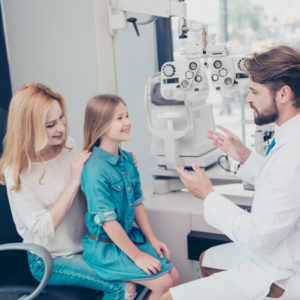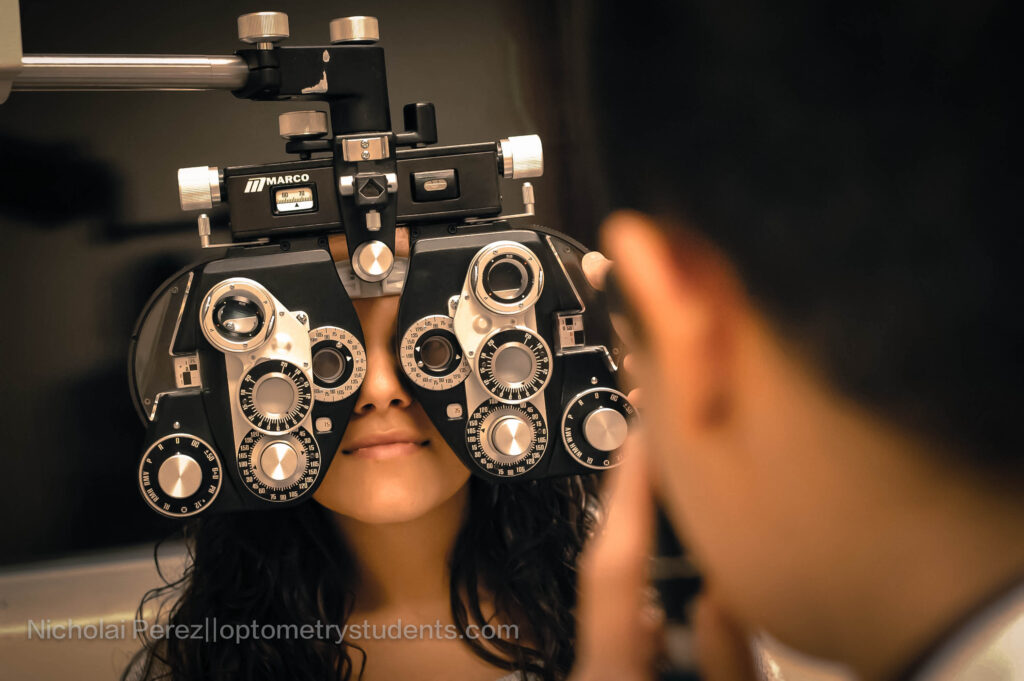Overview of Amblyopia
According to The National Eye Institute, “Amblyopia is the most common cause of visual impairment among children.”
What is Amblyopia?
There are several pieces of information you need to know to understand amblyopia. This condition traces back to early childhood and development. The eyes need to focus light on the retina in order to be able to see clearly. Amblyopia, or sometimes called lazy eye, can occur when a clear image does not reach one or both eyes. Without a clear image, the portion of the brain responsible for vision doesn’t develop normally.
How often does Amblyopia occur?
Amblyopia is a condition that affects 2-3% of children. It is important to treat children experiencing this condition as early as possible to maximize the success rate of two fully functioning eyes. Amblyopia can be seen in adults if left untreated or unsuccessfully treated during childhood. Adults who are left untreated or unsuccessfully treated will commonly have monocular (one eye) visual impairments.
What causes Amblyopia in children?
When a child is developing, not only is clear vision in each eye important, but the eyes must be well-aligned. A crossed eye can lead to the brain effectively “turning off” the input of an eye to eliminate double vision. This is known as strabismic amblyopia. Refractive amblyopia occurs when a high prescription goes uncorrected. Another scenario is anisometropic amblyopia which occurs when there is a large prescription difference between the eyes. Another type is deprivation amblyopia, where the visual input to the eye(s) is reduced. This can be caused by disorders like congenital cataracts. It is important for all infants and children to receive a comprehensive eye examination to detect any eye or vision conditions that could lead to amblyopia. This guide from the American Optometric Association gives an overview into the different types of amblyopia and clinical treatment courses.
What Are Treatment Options?
 There are a few treatment options available. Glasses or medicated eye drops could be prescribed. Patching and vision therapy may be required. Surgery could be suggested as a last resort. The objective for all these treatment options is to force the child to use the weaker eye.
There are a few treatment options available. Glasses or medicated eye drops could be prescribed. Patching and vision therapy may be required. Surgery could be suggested as a last resort. The objective for all these treatment options is to force the child to use the weaker eye.
- Patching The patching technique is an effective treatment because it aids the brain with vision development. The National Eye Institute discovered that patching could be effective if the patch is worn over the stronger eye for short increments at a time over a few weeks to months.
- Atropine Drops: An atropine drop is sometimes prescribed to children with amblyopia because it blurs the stronger eye and in theory would help the weaker eye focus.
- Prescription Glasses: In most all cases, refractive correction is prescribed in order to improve the clarity of each eye. This also encourages the eyes to work together better.
- Vision Therapy: Vision therapy, which uses training for the visual system both in-office and at home, can help a patient understand the feeling of using their eyes properly through monocular and then binocular training.
Moving forward
It is our job as current and future optometrists to bring attention to this condition, since it affects 2-3% of pediatric patients and can go unrecognized. Early detection and action are the key to a better quality of vision for a lifetime. Click this link to read about the perspective of someone living with amblyopia.
Sources
https://nei.nih.gov/health/amblyopia/amblyopia_guide
https://www.aoa.org/patients-and-public/eye-and-vision-problems/glossary-of-eye-and-vision-conditions/amblyopia/amblyopia-faqs



